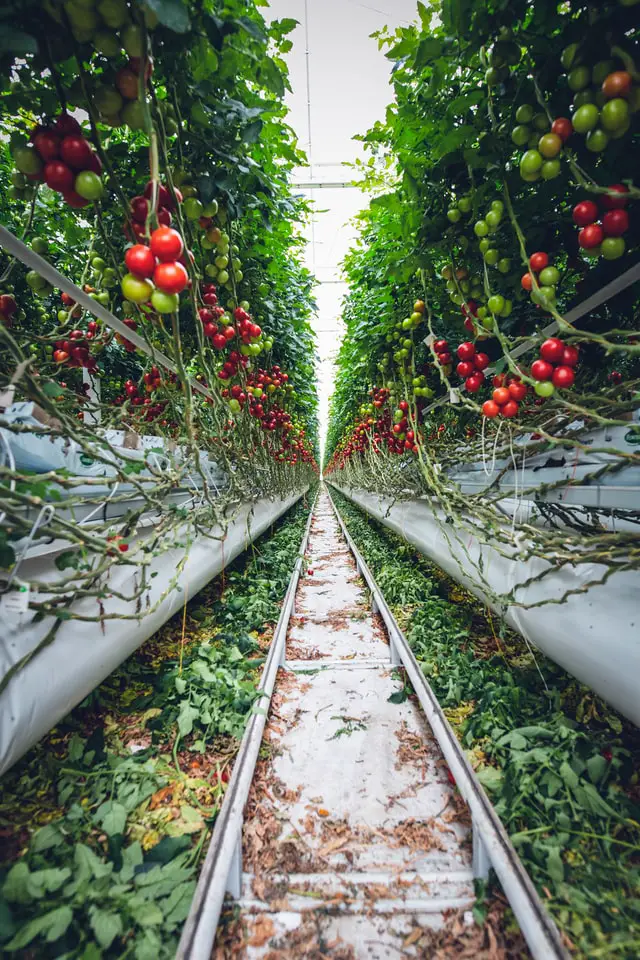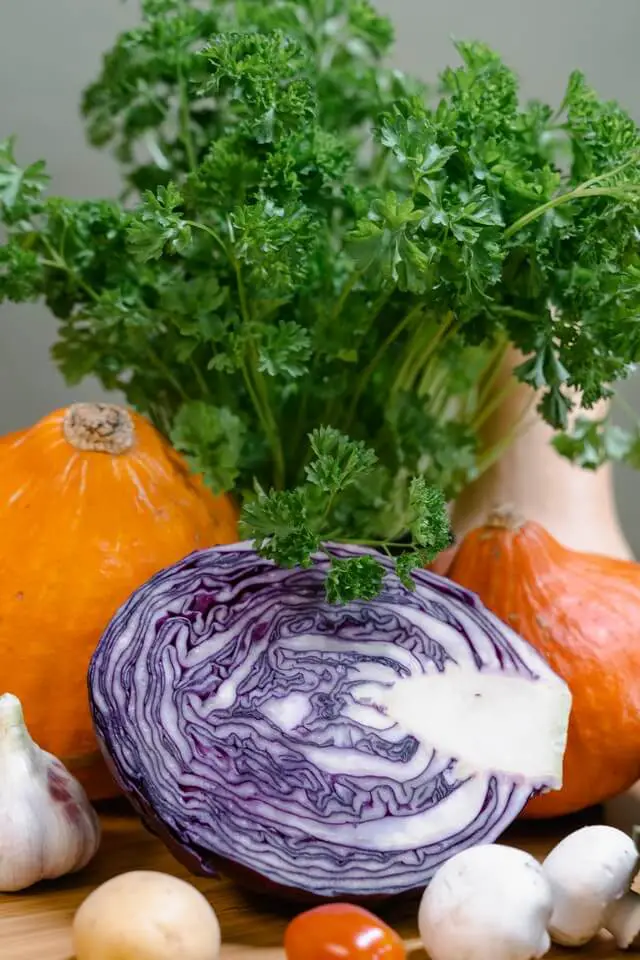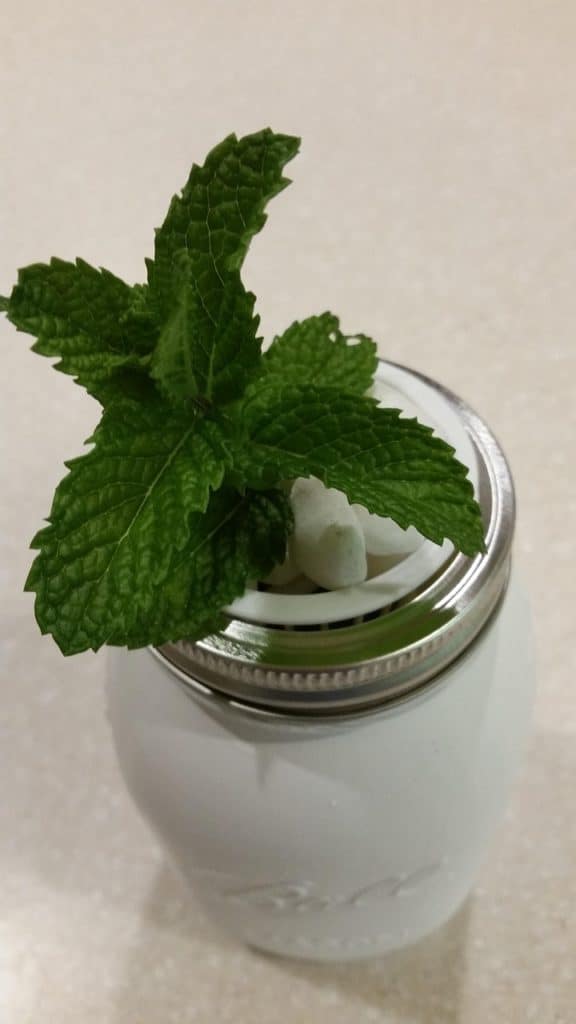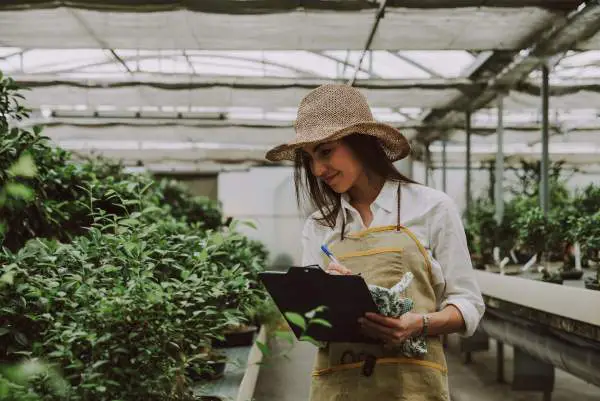Growing fresh fruits and vegetables at home is an absolute life-changer. Unfortunately, doing so in an apartment can become a nuisance as plants need space. The solution to that is vertical farming.
Vertical farming is a gardening method that utilizes a system of racks, towers, and shelves, to stack plants vertically. So far, so good. However, there are many things to consider when deciding to ditch the pots and do things vertically.
In the following article, we will thoroughly discuss the various benefits and concepts of vertical farming, what type of plants you can grow, and whether this is the right approach for you. Let’s begin!
Vertical Gardening Concepts

This kind of gardening can be carried out in any space you can imagine. Commercial growers are using tall buildings, old warehouses, or even old converted shipping containers.
Home growers are finding places that are ever more ingenious where to set up these systems, from basements, and sunrooms to spare rooms and attics.
What they all have in common is that the plants they grow are all grown in layers. Every method, which is used, will fall under the same umbrella of controlled environmental agriculture.
Following these concepts, growers will be controlling everything from the administration of nutrients, the humidity, temperatures, and artificial lighting. While in some cases there is the use of natural sunlight, this isn’t the only means of lighting, and it will be supplemented by artificial means.
One other thing all these growing methods have in common is they will all be based around hydroponics in one way or another. Once we begin looking at growing upward with a central system, which uses far less water, we can begin to see why these methods of growing are beneficial.
The amount of arable land reduces every year, so there does need to be alternative methods of growing crops for the ever-increasing world population.
Adding to this, there are some quick benefits when using these vertical gardens with hydroponics:
- Can grow seventy-five times more food per square foot than in soil
- No need for pesticides or fungicides
- Food can be healthier and safer to eat
- Food can be grown all year round
- Food can be grown in regions where it wasn’t previously possible
Also read: Is Vertical Farming Sustainable?
What is Controlled Environment Agriculture?
This we saw is an umbrella of technologies that are all geared toward the production of food. CEA has the aim of delivering crops the utmost protection while delivering the optimal growing conditions through the entire growing cycle of the crops.
These enclosed growing areas go much further than just using a hydroponic system to make use of a smaller space. The entire growing method will be optimized where everything is taken into consideration such as water, space, energy consumption, labor, and capital investment.
While this means of growth can also utilize aquaponics, and aeroponics, for the home grower, these systems may not be as feasible as they are for commercial ventures.
One area which is under continual development is that of “Biofortification” where crops are bred to increase their nutritional value. This can be accomplished by selective breeding from different strains of plants, or through genetic engineering and cloning.
These methods vary from regular fortification as they focus on making the food healthier and more nutritious as the crops are growing instead of adding additional nutrients to the crops while they are being processed.
How Does Small Scale Indoor Farming Work?

Growers who are thinking of utilizing these methods of growing crops will need to go through several factors, which dictate the way the system will work, and how successful it can be.
Unlike a regular hydroponic system, there are plenty more things to consider. Because many crops will be grown in layers, this means that there is not as much opportunity for taller plants in this system type. When you add into this the types of plants that are ideal, it may be the growers end up growing too much of the same.
It is for this reason, that there does need to be some form of a feasibility study conducted. This will show if what the growers wish to achieve is cost-effective, or they may need to design a growing space that allows them to follow the racking growth system for some crops and a separate area for a more conventional system.
Here are some of the factors, which will determine the viability of vertical farms for the home gardener.
1# Layout
The goal of indoor vertical farming is to make full use of the available space. It is here where growers need to maximize the growing capacity per square meter or foot. To do this easily, growing upward is the key.
2# Light Sources
Growers can use natural light sources, and supplement these with grow lights; however, this may not always be possible. There may be a need for reflectors, rotating beds, or other means of making sure the same amount of light falls on all the plants for the specified time.
3# Growing Methods
It is here where the different system types come into play. These can be hydroponics, aeroponics, or aquaponics. This will be dictated by the growing area and the type of system used.
Also read: Best Vertical Hydroponic Systems
4# Sustainability
Everything needs to be supplied by the grower, and if this isn’t done in the right manner, or in the right amounts, then it won’t be possible to sustain the garden. Included in this can be rain catchment tanks, wind turbines, or growing spaces that can be used for other things as well. A vertical garden will also need to be running all year round to maximize crop growth and reduce overall running expenses.
Small Scale Vertical Gardening for the Home Grower
For home growers, there are many ways they can make use of the concepts and build systems. These come in some very ingenious forms, with one of the simplest and most effective being the window garden, which was developed by a professor from Belgium. Willem Van Cottenham came up with a simple kitchen garden system that makes use of natural sunlight and recycled plastic bottles.
This method takes a number of bottles and strings them together; these hand from the uppermost part of the window frame and have a small window cut into the sides of the bottles where net cups can be placed on a growing medium of choice.
At the top of the window is a small reservoir where nutrients are pumped with a small pump, from here they then make their way out of drip emitters into the topmost bottles. This acts like a regular drip system, yet the nutrients pass through the first bottle and into the second, and then the third.
At this point, they return to a second catchment reservoir to be reused and circulated back to the top at set intervals.
The same simple concept can be used with plants being placed outdoors rather than inside windows, yet this is ideal for people who lack space.
This concept will be limited to what it can grow, yet there is another form of vertical gardening, which has taken the world by storm almost as much as the interest in hydroponics. Micro-greens are the first shoots from plants and are often used as a garnish in restaurants.
However, they have been found to contain many more benefits, such as an increase in the nutrition they deliver. The popularity of these is the way they grow, and how quickly they can be harvested.
Micro-greens follow the vertical gardening ethos down to the finest of details. They are grown in shallow trays and will be stacked on shelves with a set distance between each. Hanging above will be a grow light that is used once the seeds have germinated. Once these greens are ready to harvest, they can be any height from around one inch to around three inches, yet this will depend on the seeds used.
Crops in Micro-greens can be harvested in between ten and fourteen days. Such is the popularity and the ease of this kind of crop and the growing setup required there are many businesses formed on the back of this concept because it is something, which can begin small and scale up in any area of a home.
Vertical gardening around the home doesn’t need to be difficult. The concepts can even be used to supplement regular growing spaces because of the limited space they use. When it comes to the feasibility, this method will help growers save money on groceries, whilst delivering healthier foods onto the table.
These systems are sustainable and make it easy for anyone who lacks a suitable area for a full-sized hydroponic system to do their part in growing their own food and putting less strain on the environment.
What Can You Grow with Vertical Farming?

Depending on the base structure of your vertical gardening system, it is possible to grow near enough anything. However, just because it is possible to grow almost anything, doesn’t mean it makes sense to do so.
There is a point where some crops are not worth growing, or they are not suitable for a family. One other thing, which needs consideration, is for growers who are seeking a commercial venture and are looking at crops that they can sell. The chances of selling your crops and the cost of production are the most crucial factors at this stage.
Regardless of whether you are growing to sell, or for personal consumption, you will need a feasibility study to understand you are heading in the right direction.
At the end of the day, making the right choices of crops is the best way to make sure you will make your vertical garden a success.
Here is a breakdown of how to look at the determining factors, and then a look at some of the best crops you can grow in vertical gardening systems.
1# Economics & Viability
There are many crops that make sense to grow, yet from a financial stance, they make little sense to grow. This is true if you plan to sell because if you can’t make money from one of your crops, there can be a few reasons for this:
- Limited profit due to no demand
- Production costs are too high
- The wrong kind of climate – heating, lighting, and cooling costs are too much
This can be the same for the home grower, but to a lesser degree. However, you don’t want to find you are spending more on producing your healthy vegetables than it would cost to purchase them.
2# Timing of Harvests
This can affect small commercial ventures as much as it can affect a home grower. When you take the time from your seedlings to the time, they can be harvested and marketed “A Turn,” this needs to make sense.
Crops, which grow fast, or have a fast turn such as mint, basil, collard greens lettuce, and other similar growing vegetables, will help growers reduce their liability. From the start, a grower will already know they are no more than six weeks from a harvest.
If you are looking to grow crops that have a slow turn, they will have a higher value when selling. A recommendation for a split to balance each other out is a high percentage of greens to herbs.
For a home grower who is after enough for consumption, the same will ring true. It makes no sense to grow more lettuce than you can consume, likewise, you don’t want to grow too many slow turn crops where you will be waiting for a harvest, and you may need to resort to going back to the supermarket.
Here are some of the best crops for you to grow on your vertical farm at home.
Best Vertical Growing Crops
Kale
There are several varieties you can choose from, although Tuscan kale is one of the more popular. These will take a larger vertical system as they can grow quite large. Aside from that, they can take care of themselves and don’t need too much attention.
Lettuce
Once you understand how fast your lettuce will grow, and how much you can consume, or sell? You will see there is a consistent demand throughout the year. With dozens of varieties available, it will never become tiresome when you can have a fresh crispy salad at the times of year you least expect it.
Collard Greens
If you have the right setup, these are ideal for growing at home because you can pluck these rather than harvest the entire plant. Chard is a smaller variety of collard green and can be easier to control. This cooks similar to spinach and can be harvested on a number of occasions if you only take around a third of the plant as a maximum. This will grow back and deliver a larger yield.
Basil
Many growers find that when they have a vertical garden, Basil shines as it grows better in these methods than many other systems. There is also a steady demand for Basil, so it can be a decent crop to grow for home consumption or to be the first you grow for a small commercial enterprise. It can be harder to grow and harvest, yet the benefits of doing so are well worth it.
Woody Herbs
The smaller woody herbs such as Oregano, Thyme, and Rosemary can be a little choosy when it comes to growing. Because of their nature, they do prefer a drier footing when growing. They also have a slow turn in comparison to other crops, yet these are so distinct in aroma and flavor, it can be worth dedicating a small portion of a vertical garden to these. Growers can also find there is always a strong demand for these in many different markets.
Mint and Chives
For beginners, there is nothing easier to grow than mint and chives. These are generally grouped with herbs, yet they have a quick turn. Chives look like grass and are very easy to harvest as a whole, or you can cut what you require. Mint can take over a system as it has rapid growth, so it is advisable to not plant too much, to begin with.
Conclusion
Vertical gardening may just be a term for indoor gardening, yet there is much more to it than that. With the number of unique designs growing where the most unusual spaces are used. These are pushing vertical gardening to the limits.
Home growers may already have a system in mind, or in place, yet taking a step back and having a rethink can dramatically increase the yields they can expect from their garden as a unit. Something as simple as Micro-greens doesn’t require too much to set up in terms of cost, or in care, yet what they deliver far outweighs the little space they take up.
Vertical gardening is seen as the way forward to solve the world’s problems for an increasing population, and the reduction in farming land.
It is never too late for any grower to begin using the concepts from above to increase their yields without increasing their impact on the environment.





